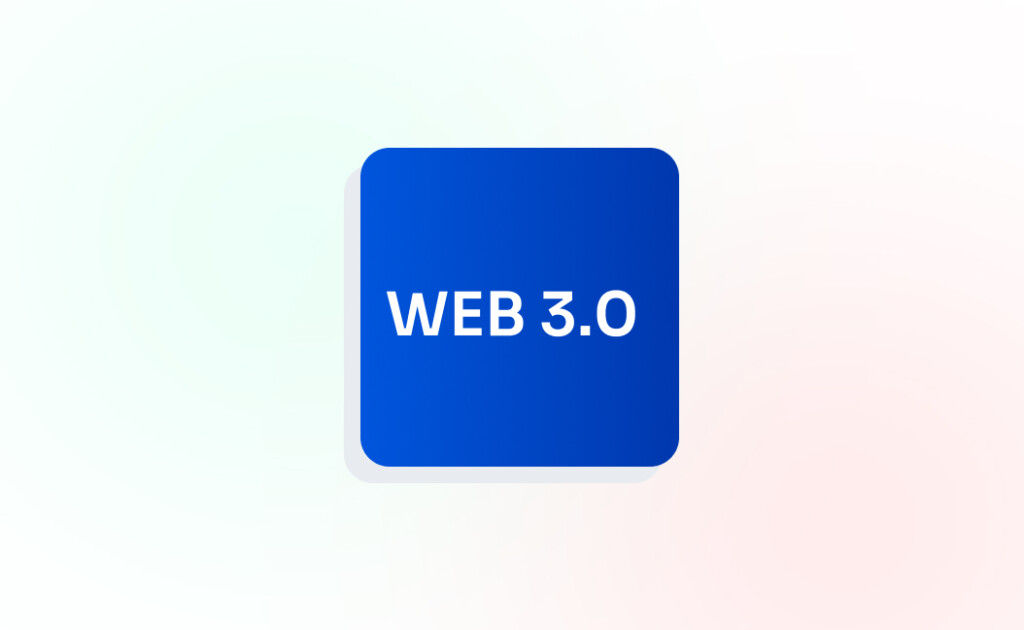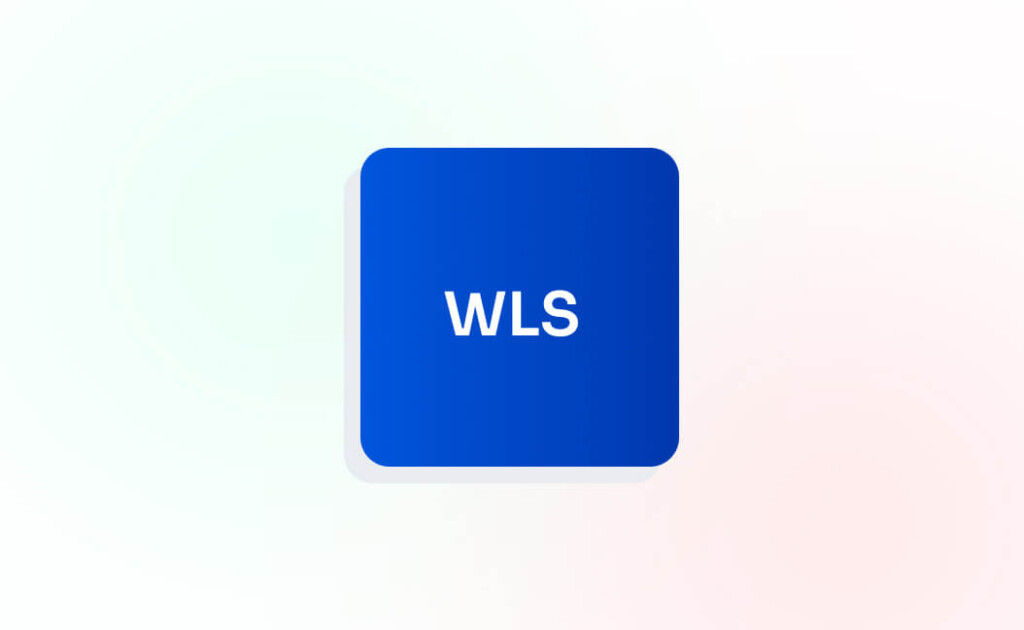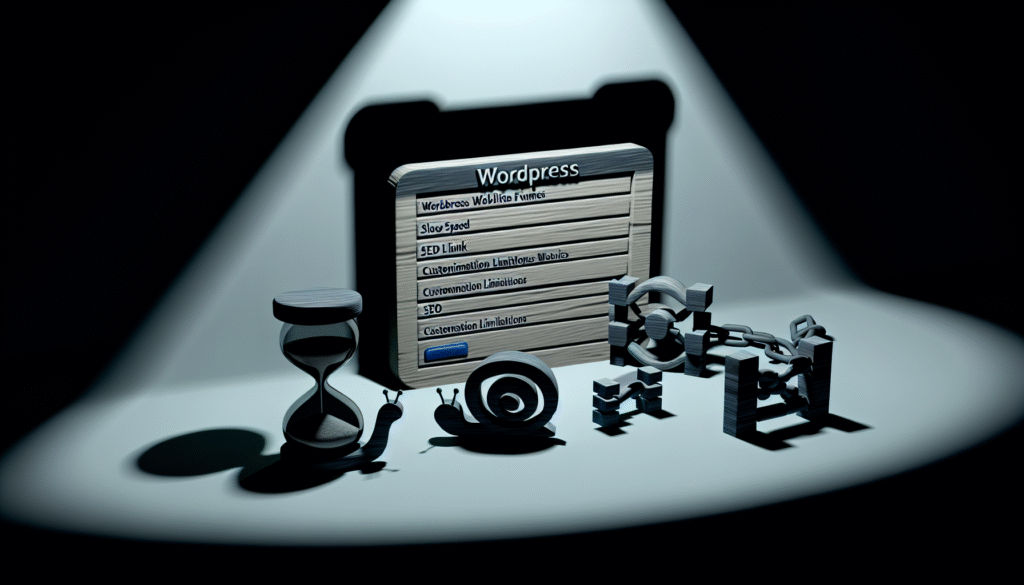What You Need to Know About Web 3.0

The internet has evolved significantly since its inception, transitioning from the static pages of Web 1.0 to the interactive, user-generated content of Web 2.0. Now, we stand on the brink of another transformative era: Web 3.0. This new phase promises to reshape how we interact with the digital world, emphasizing decentralization, enhanced user control, and smarter, more connected web experiences. Here's everything you need to know about Web 3.0.
Understanding Web 3.0
Web 3.0, often referred to as the semantic web or decentralized web, is an evolution of the current internet framework. Unlike its predecessors, Web 3.0 aims to create a more intelligent, autonomous, and open internet by leveraging technologies like blockchain, artificial intelligence (AI), and the Internet of Things (IoT)
- Decentralization - Data is no longer stored in centralized servers but distributed across networks, reducing reliance on major corporations and increasing data security.
- Trust and Transparency - Blockchain technology ensures transparency and trust by providing a tamper-proof ledger of transactions and interactions.
- Enhanced User Control - Users have more control over their data, deciding what to share and with whom, often facilitated by decentralized identity systems.
- Interoperability - Different platforms and devices can seamlessly interact, thanks to standardized protocols and decentralized networks.
- Personalization and AI - AI and machine learning create highly personalized user experiences by understanding and anticipating user needs.
Technologies Driving Web 3.0
Blockchain is the backbone of Web 3.0, enabling decentralization and trust. Cryptocurrencies, like Bitcoin and Ethereum, are pivotal in creating decentralized financial systems and enabling new economic models.
- Smart Contracts - Self-executing contracts with the terms directly written into code, allowing automated, trustless transactions.
- Decentralized Applications (dApps) - Applications that run on blockchain networks, offering improved security, transparency, and user control.
AI and machine learning algorithms analyze vast amounts of data to understand user behavior and preferences, providing more relevant content and services.
- Natural Language Processing (NLP) - Enhances search engines and virtual assistants, making them more effective at understanding and responding to human language.
IoT connects everyday devices to the internet, enabling them to collect and exchange data. This interconnectivity facilitates smarter, more responsive environments.
- Smart Homes and Cities - IoT devices work together to create more efficient, sustainable living spaces.
Implications for Users and Businesses
Web 3.0 promises to revolutionize the way users interact with the internet and how businesses operate within this digital ecosystem. Here's an expanded look at the implications for both users and businesses:
For Users:
- Data Ownership and Privacy
- Increased Control: Web 3.0 empowers users to control their own data. With decentralized identity systems, users can manage their personal information, deciding what to share and with whom. This reduces the risk of data breaches and unauthorized access.
- Enhanced Privacy: By using encryption and blockchain technology, Web 3.0 ensures that user data is secure and private. Users can interact online without constantly worrying about their data being tracked and sold to third parties.
- Enhanced User Experience
- Personalization: AI and machine learning algorithms analyze user behavior and preferences, offering personalized content and services. This results in a more tailored and satisfying user experience.
- Interoperability: Seamless interaction across different platforms and devices means users can enjoy a consistent experience, whether they’re using a smartphone, laptop, or IoT device.
- Economic Opportunities
- Decentralized Finance (DeFi): DeFi platforms enable users to participate in financial activities like lending, borrowing, and investing without intermediaries. This opens up new ways to earn and manage money.
- Token Economies: Users can earn, trade, and invest in digital tokens representing various assets and services. This can democratize access to investment opportunities and foster new economic models.
- Freedom of Expression and Censorship Resistance
- Decentralized Platforms: Web 3.0 platforms are less prone to censorship, allowing for greater freedom of expression. Users can share content without fear of it being removed by centralized authorities.
- Immutable Records: Blockchain technology ensures that once information is published, it cannot be altered or deleted, preserving the integrity of digital records.
- Improved Digital Identity
- Self-Sovereign Identity: Users can create and manage their digital identities independently, using cryptographic proofs to verify their identity. This reduces reliance on centralized identity providers and enhances security.
- Portability: Digital identities in Web 3.0 are portable, allowing users to carry their identity across various platforms and services seamlessly.
For Business:
- New Business Models
- Tokenization: Businesses can tokenize assets and services, creating new revenue streams and engaging customers in innovative ways. For example, companies can issue tokens that represent shares in a project or provide access to exclusive content.
- Decentralized Marketplaces: These marketplaces operate without a central authority, reducing fees and enabling peer-to-peer transactions. Businesses can reach new customers and markets without the constraints of traditional intermediaries.
- Improved Efficiency
- Smart Contracts: Automating processes with smart contracts reduces administrative overhead and eliminates the need for intermediaries. This increases efficiency and lowers costs.
- Supply Chain Transparency: Blockchain technology can provide transparent and immutable records of transactions, enhancing supply chain management. Businesses can track products from origin to consumer, ensuring authenticity and reducing fraud.
- Increased Trust
- Transparency: Blockchain’s transparent nature builds trust with consumers and partners. Every transaction is recorded on a public ledger, ensuring accountability and reducing the risk of fraud.
- Consumer Confidence: As users gain more control over their data, their trust in businesses that respect their privacy increases. This can lead to stronger customer relationships and loyalty.
- Enhanced Security
- Resilience: Decentralized systems are less vulnerable to single points of failure. This enhances the security and reliability of business operations.
- Data Protection: Encryption and decentralized storage protect sensitive business data from cyberattacks and unauthorized access.
- Innovation and Competitive Advantage
- Early Adoption: Businesses that embrace Web 3.0 technologies early can gain a competitive advantage. By innovating with decentralized solutions, companies can differentiate themselves in the market.
- Collaborative Ecosystems: Web 3.0 fosters collaboration between businesses. By leveraging decentralized networks, companies can share resources, data, and technology, driving innovation and growth.
- Regulatory Compliance
- Automated Compliance: Smart contracts can automate compliance with regulations, reducing the risk of human error and ensuring adherence to legal standards.
- Transparency: Blockchain provides a transparent and auditable trail of transactions, making it easier for businesses to demonstrate compliance with regulatory requirements.
Web 3.0's implications for users and businesses are profound, offering enhanced control, privacy, and opportunities for users, while enabling businesses to innovate, build trust, and operate more efficiently. As this new internet era unfolds, staying informed and adaptable will be crucial for harnessing its full potential. Whether you're a user enjoying greater digital autonomy or a business exploring new frontiers, Web 3.0 promises a transformative impact on the digital landscape.

Challenges and Considerations
Scalability - One of the most significant challenges facing the widespread adoption of Web 3.0 is scalability. As the underlying technologies of Web 3.0, particularly blockchain, continue to evolve, the issue of scalability remains a critical barrier to its practical and widespread use. Current blockchain networks can be slow, costly, and resource-intensive, which limits their ability to support the mass adoption necessary for a truly decentralized internet. However, various innovative solutions, such as sharding, layer-2 protocols, and other technological advancements, are being developed to address these issues.
Scalability is one of the most pressing challenges for Web 3.0, but it is not insurmountable. Through a combination of innovative technologies, improved architectures, and collaborative efforts, the Web 3.0 ecosystem can achieve the scalability necessary for mass adoption. As these solutions mature, we can look forward to a decentralized internet that is not only more secure and user-centric but also capable of supporting the demands of a global digital economy.
Regulation - Web 3.0’s decentralized nature presents unique challenges for regulators. Traditional regulatory frameworks struggle with the shift from centralized control to distributed networks and peer-to-peer interactions. This creates complexities in oversight without stifling innovation.
Blockchain technology, a cornerstone of Web 3.0, enables transparent, immutable records but also supports anonymity and borderless transactions. This complicates anti-money laundering (AML) and know-your-customer (KYC) initiatives, which rely on centralized intermediaries. Cryptocurrencies, like Bitcoin and Ethereum, operate independently of central banks, posing challenges for financial stability, tax evasion, and illicit activities. Regulatory bodies are exploring responses, from bans to new frameworks that balance innovation and oversight.
Smart contracts automate agreements without intermediaries, raising issues of legal compliance, liability, and dispute resolution. Decentralized finance (DeFi) platforms democratize financial services but bring concerns about investor protection, market manipulation, and systemic risk. Regulators must ensure transparency and fairness while fostering innovation.
Data privacy and security in Web 3.0 complicate enforcement of laws like the EU’s GDPR. Decentralized data storage across jurisdictions challenges national law application. Intellectual property rights face similar hurdles, with decentralized platforms complicating copyright enforcement. New strategies are needed to protect intellectual property in this environment.
The global nature of decentralized technologies requires international cooperation. Blockchain and decentralized applications operate across borders, necessitating harmonized regulatory standards. Initiatives like the Financial Action Task Force’s (FATF) guidelines for virtual assets illustrate proactive regulatory approaches.
Despite challenges, regulators see Web 3.0’s potential for innovation, growth, and inclusion. Creating a regulatory environment that mitigates risks without stifling benefits requires balancing innovation with protection and global cooperation with local enforcement. Adapting and developing new frameworks will help shape a decentralized internet that benefits all.
User Adoption - For Web 3.0 to succeed, widespread user adoption is essential, requiring a shift from traditional, centralized systems to embracing new, decentralized technologies. This transition demands both education and a cultural change, as users must understand and trust these new paradigms.
At the heart of Web 3.0 are complex technologies like blockchain, cryptocurrencies, smart contracts, and decentralized applications (dApps). Many users find these concepts unfamiliar and intimidating. Therefore, comprehensive education is necessary to demystify these technologies and explain their benefits and potential risks. Educational initiatives should focus on explaining the fundamentals of blockchain, practical applications like using dApps and managing digital wallets, and teaching security practices such as securing digital assets and avoiding scams.
Shifting mindsets from centralized to decentralized systems involves a fundamental change in perception. Traditional systems rely on trusted intermediaries, whereas Web 3.0 places control directly in the hands of users. This new level of responsibility requires users to understand the value and benefits of decentralization, including owning their data and digital assets, trusting automated systems, and being open to innovation.
To facilitate user adoption, Web 3.0 applications need to be user-friendly, with intuitive interfaces and seamless experiences. Community-driven support networks, like online forums and local meetups, can help build trust and confidence in new technologies, making the transition smoother. Incentives such as token rewards and airdrops can drive early adoption by attracting users and helping them become familiar with new technologies.
Collaborations between traditional companies and Web 3.0 projects can bridge the gap for users. When well-known brands adopt and integrate decentralized technologies, it lends credibility and encourages their user base to explore these new options. Clear and supportive regulatory frameworks can also boost user confidence. When users understand the legal landscape and feel assured their activities are within regulatory bounds, they are more likely to participate.
User adoption is the linchpin for the success of Web 3.0, requiring a concerted effort to educate users, shift mindsets, and develop user-friendly technologies. By fostering an environment of support, incentivization, and clear regulation, the transition to a decentralized web can be made smoother and more appealing. As users become more comfortable with owning and controlling their digital identities and assets, the full potential of Web 3.0 can be realized, leading to a more secure, transparent, and user-centric internet.
The Future of Web 3.0
The potential of Web 3.0 is vast, promising a more secure, efficient, and personalized internet. As the technologies driving this new era continue to mature, we can expect to see significant advancements in various sectors, from finance and healthcare to entertainment and governance.
Interconnected Ecosystem - Web 3.0 will create a more interconnected digital ecosystem, where data and services flow seamlessly across platforms, improving collaboration and innovation.
Empowered Users - Users will enjoy greater empowerment, with control over their data and digital identities. This shift will redefine the relationship between consumers and digital service providers.
Sustainable Growth - Decentralized systems can contribute to more sustainable economic growth, reducing the dominance of monopolistic entities and fostering a more equitable digital economy.
Conclusion
Web 3.0 represents a paradigm shift in how we interact with the internet. By embracing decentralization, transparency, and user empowerment, it promises to create a more open, intelligent, and user-centric digital world. While challenges remain, the potential benefits of Web 3.0 make it an exciting frontier for both users and businesses alike. As we move forward, staying informed and adaptable will be key to harnessing the full potential of this transformative era.



